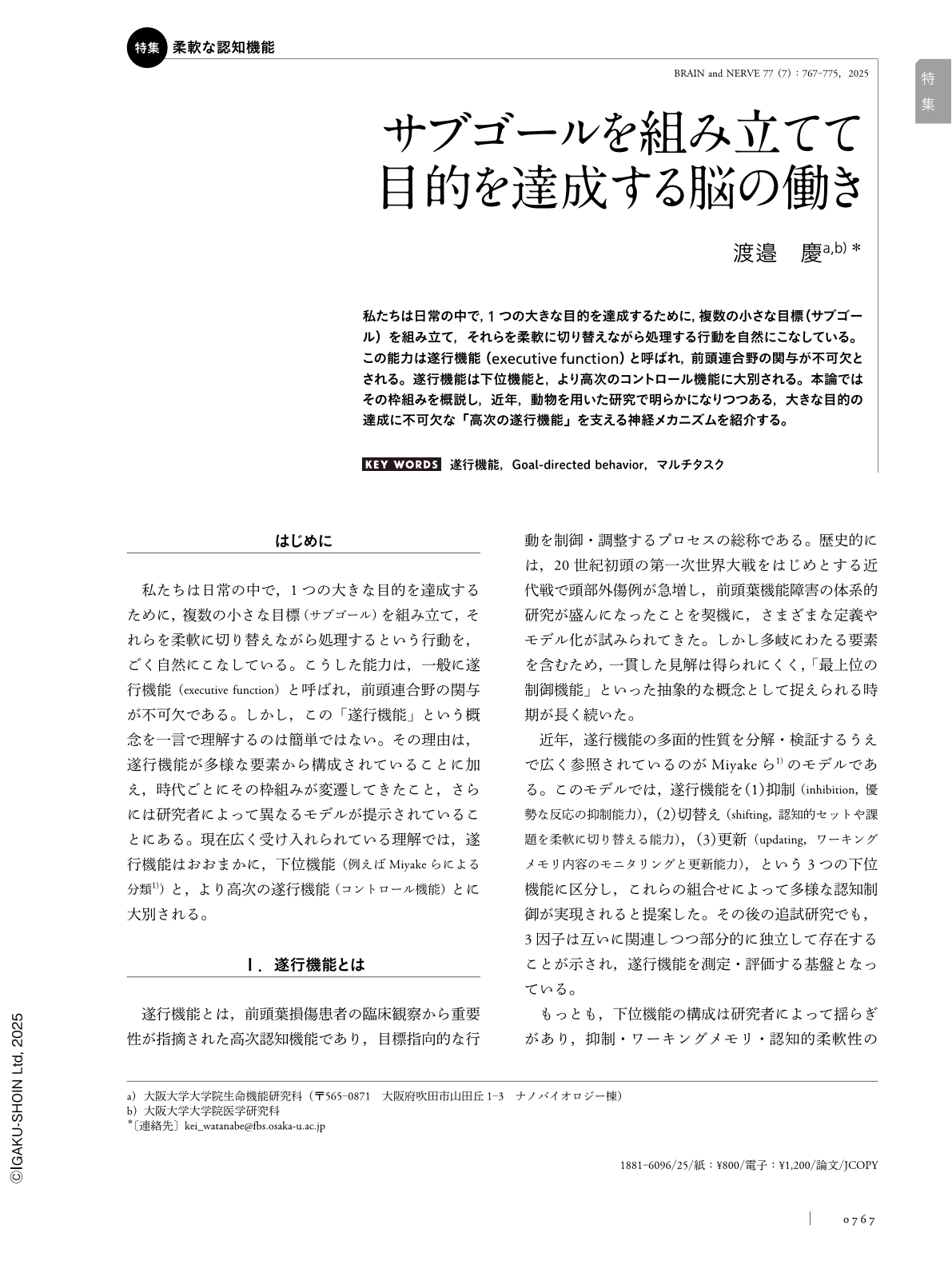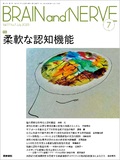Japanese
English
特集 柔軟な認知機能
サブゴールを組み立てて目的を達成する脳の働き
Neural Mechanisms for Goal Achievement by Coordinating Multiple Subgoals
渡邉 慶
1,2
Kei Watanabe
1,2
1大阪大学大学院生命機能研究科
2大阪大学大学院医学研究科
1Graduate School of Frontier Biosciences, Osaka University, Nanobiology Building
2Graduate School of Medicine, Osaka University
キーワード:
遂行機能
,
Goal-directed behavior
,
マルチタスク
,
executive function
,
goal-directed behavior
,
multitasking
Keyword:
遂行機能
,
Goal-directed behavior
,
マルチタスク
,
executive function
,
goal-directed behavior
,
multitasking
pp.767-775
発行日 2025年7月1日
Published Date 2025/7/1
DOI https://doi.org/10.11477/mf.188160960770070767
- 有料閲覧
- Abstract 文献概要
- 1ページ目 Look Inside
- 参考文献 Reference
私たちは日常の中で,1つの大きな目的を達成するために,複数の小さな目標(サブゴール)を組み立て,それらを柔軟に切り替えながら処理する行動を自然にこなしている。この能力は遂行機能(executive function)と呼ばれ,前頭連合野の関与が不可欠とされる。遂行機能は下位機能と,より高次のコントロール機能に大別される。本論ではその枠組みを概説し,近年,動物を用いた研究で明らかになりつつある,大きな目的の達成に不可欠な「高次の遂行機能」を支える神経メカニズムを紹介する。
Abstract
In everyday life, we routinely achieve overarching goals by assembling multiple sub-goals and flexibly switching between them. This ability, known as executive function, critically depends on the prefrontal cortex and is commonly divided into low- and high-order functions. In this article, we outline the framework of executive function and introduce recent animal studies that illuminate the neural mechanisms underlying higher-order executive functions.

Copyright © 2025, Igaku-Shoin Ltd. All rights reserved.


